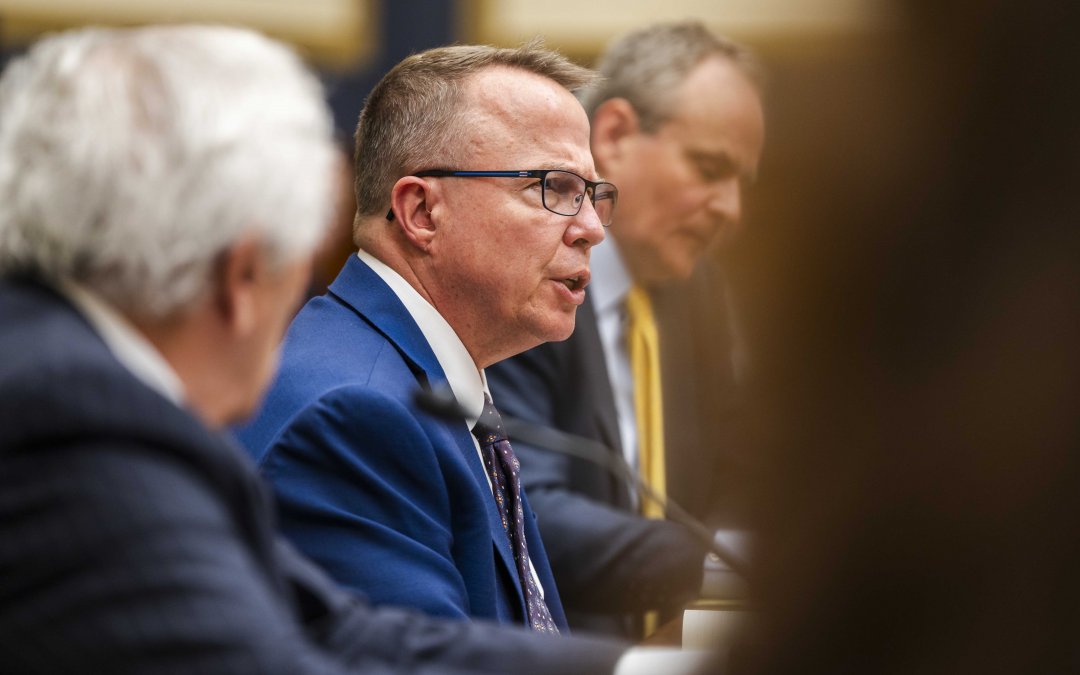WASHINGTON – Economists promoted increased usage of the Fed’s discount window to insulate the economy from risks of financial crisis at a hearing on Thursday.
The economists stressed the importance of destigmatizing discount window lending from the Fed before the House Subcommittee on Financial Institutions and Monetary Policy.
“The discount window is also, and has always been the bank’s first line of defense against broader financial turmoil,” said William Nelson, chief economist at the Bank Policy Institute.
Discount window lending is one of the Fed’s lender of last resort functions, and is used to support banks through liquidity crises.
The Fed lends to solvent financial institutions at the discount window against good collateral. Otherwise, the Fed is licensed under the Federal Reserve Act to make emergency loans in “exigent” situations.
“Many banks now refuse to borrow under any circumstances except perhaps an obvious glitch affecting the entire payment system,” Nelson continued, pointing a finger at stigma.
Hal Scott, a Harvard University professor of International Financial Systems, asserted that the Fed’s lender of last resort function should be conducted primarily through the discount window and minimized in emergency lending.
The panicked mindset that underlies financial crises contributes to the stigma, according to Scott.
People think irrationally, “if this bank fails, every bank is going to fail–I’m getting my money out,” said Scott.
Under the 2008 Dodd-Frank Wall Street Reform, which was enacted to crack down on financial risk-taking, the borrowing behavior of banks was obscured from the public for two years.
Nelson suggested a return to this system could reduce the stigma and disincentive banks from using the discount window.
However, Simon Johnson, professor of entrepreneurship at the MIT Sloan School of Management, cautioned that keeping borrowing secret would be “problematic” since the ability to borrow from the Fed is already exclusive to banks.
Rep. Bill Foster (D-Ill.) and Rep. Blaine Luetkemeyer (R-Mo.) acknowledged that social media, artificial intelligence and 24-hour banking will only accelerate bank runs by amplifying market behavior fluctuations and facilitating rapid deposit withdrawals.
“We live in a different world where this instantaneous ability to do things today is such that we got to be able to instantaneously react,” said Luetkemeyer. “If we don’t, I’m fearful.”
The vulnerabilities of the financial system were stripped bare last March with the collapse of the Silicon Valley Bank, the third largest bank failure..
The witnesses called attention to this financial crisis, asking that the Fed work on policies to destigmatize lending at the discount window.
“The lack of capital or potential insolvency is absolutely intertwined with issues of liquidity pressure in many financial crises, and it was absolutely with Silicon Valley Bank,” said Johnson.
To mitigate the contagion effect which can snowball into a full-scale bank run, the Fed can provide more financial support to prop up capsizing banks.
The Fed used emergency lending to bail out institutions after the Global Financial Crisis, the COVID-19 recession, and most recently, the Silicon Valley Bank collapse with the Bank Term Funding Program.
Expanded use of emergency lending leads banks to think the Fed will open a new lending facility to bail them out, according to Nelson.
“The safety net is expanding,” said Nelson.
The discount window should be used instead as a liquidity crutch for undercapitalized banking institutions, said Nelson in an interview with Medill News Service.
“We want banks to see this as a tool they can use, we encourage them to count that potential access is one of the ways that they meet their liquidity contingencies,” Nelson said. “This is not a bailout, this is not an indication that the bank is in trouble.”



